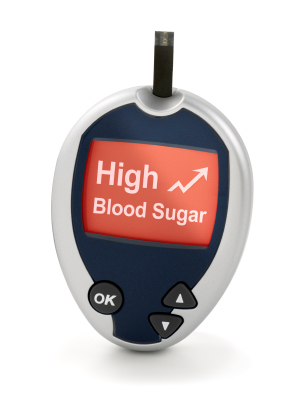Glycemic Index And Your Quick Weight Loss
Diabetics learned long ago the secret to maintaining a healthy blood sugar. Monitoring the glycemic index, exercise, and medications can help to maintain a healthy blood sugar. Fitness enthusiasts are now starting to delve a little more into the wonderful world of stable blood sugar as a way to lose weight without yo-yo dieting, which can cause mood swings and other things.
People are not resorting to medications, but are using the glycemic index and glycemic load of food as a way to balance not only their diet, but also their blood sugar.
Everyday people, bodybuilders, and athletes are turning more to the glycemic index of food and the new science of nutrition timing as ways to boost weight loss results and athletic performance. The proper timeframes for the body to process nutrients and balancing the amount of carbohydrates, proteins, and fat will help with optimal results.
Even with nutrition timing, glycemic load, and glycemic index, there is still a large amount of confusion as to what each one is and how they affect the body.
Glycemic Index
When we eat carbohydrates, there is a rise in blood sugar. This rise is also associated with the pancreas reacting, causing a release of insulin in the blood stream to shuttle that sugar into the working muscles. This response of the body is automated depending on how much sugar is in the blood. This is where the glycemic index comes in. Carbohydrates are categorized according to how fast or slow the blood sugar rises in the body.

Foods rich in carbohydrates usually have an associated tag with them, which is the glycemic index. There are three indexes that are classified in the index: High, Medium, and Low. High indexed foods will digest quickly and have a fast absorption rate, leading to a sharp rise in blood sugar and resulting in a dual response of the pancreas, releasing a large amount of insulin.
On the opposite spectrum, a food classified as a low-glycemic indexed food will digest and absorb slower, resulting in a much slower rise in blood sugar, resulting in a slower release of insulin in the body. This concept was originally developed as a way to help diabetic patients monitor the types of foods that they were eating, and maintaining a more stable blood sugar response.
Glycemic Load
You may hear the terms glycemic load and glycemic index used in the same sentence. The glycemic load of food utilizes the glycemic index and the portion of carbohydrates to determine how the body will react.
For example, you take in a food that is high in the glycemic index, but a small portion of that. There would be a subsequent release in the blood of sugar and insulin.
With the glycemic load, you might have the same response to a much bigger portion of a lower glycemic indexed food as you did with the small, high glycemic indexed food.
Low Glycemic Foods and Weight Loss
Maintaining a diet of food with a low glycemic index has been shown beneficial in a number of different areas. In the study by Thomas et al, they determined that a diet rich in foods that have a low glycemic index resulted in higher weight loss, lower BMI, lower total fat mass, and a change in reduction in total and LDL cholesterol.
In a similar study, but one involving overweight children, Spieth et al, concluded that a low glycemic diet helped reduce body weight and body mass index in overweight children. The study involved 107 obese children.
They used a low glycemic indexed diet and a low-fat diet. The results showed that children utilizing a low glycemic indexed diet lost an average of 3kg/m, giving stronger evidence that a low glycemic index diet might be beneficial to weight loss.
Research performed by Radulian et al, showed that low glycemic index diets also helped in rapid weight loss, decreasing in fasting glucose and insulin levels, reduction in triglyceride levels, and improvements in blood pressure.
These studies show some promising results, and more research should be done to continue to validate these alternatives.
References:
Spieth, LE. Harnish, JD. Lenders, CM. Raezer , LB. Pereira, MA. Hangen, SJ. Ludwig, DS. A low-glycemic index diet in the treatment of pediatric obesity. Pediatr Adolesc Med. 20100 Sep: 154(9)947-951.
Thomas D, Elliott EJ, Baur L. Low glycaemic index or low glycaemic load diets for overweight and obesity. Cochrane Database of Systematic Reviews 2007, Issue 3. Art. No.: CD005105. DOI: 10.1002/14651858.CD005105.pub2.
Campbell, B. Glycemic Load Vs. Glycemic Index. Paper. NSCA
Foster-Powell K, Holt S, and Brand-Miller J. International table of glycemic index and glycemic load values: 2002. American Journal of Clinical Nutrition, 76:5 – 56, 2002.
Radulian G, Rusu E, Dragomir A, Posea M. Metabolic effects of low glycaemic index diets. Nutrition Journal, 29;8:5, 2009.
About Jayson Hunter & Jaylab Pro

Jaylab Pro was founded by Registered Dietitian Jayson Hunter. Jayson has been recognized as one of America's foremost weight loss experts by America's Premier Experts™. He has also been featured in USA Today for this accomplishment. Jayson is also a best-selling author having co-authored multiple books in health & fitness and business growth. Jayson and the Jaylab Pro team are proud to create content that helps improve the lives of millions of people around the world. We hope you enjoy it just as much as others have.
 If you order a JayLabPro SmartShip product or any Combo Package, we will automatically ship you a new supply of the product or products you have ordered every month, starting 30 days after your initial order is shipped, and continuing until you cancel. The credit card you are using today will be billed the lowest available price for those product or products when your order is shipped, but shipping will be FREE. You may log into your customer account or call our customer service department toll-free at 1-888-9GETPRO (1-888-943-8776) between the hours of 8am – 9pm EST Mon-Fri to cancel future shipments, customize the timing of your shipments, or change the credit card used for billing.
If you order a JayLabPro SmartShip product or any Combo Package, we will automatically ship you a new supply of the product or products you have ordered every month, starting 30 days after your initial order is shipped, and continuing until you cancel. The credit card you are using today will be billed the lowest available price for those product or products when your order is shipped, but shipping will be FREE. You may log into your customer account or call our customer service department toll-free at 1-888-9GETPRO (1-888-943-8776) between the hours of 8am – 9pm EST Mon-Fri to cancel future shipments, customize the timing of your shipments, or change the credit card used for billing.









